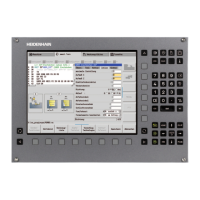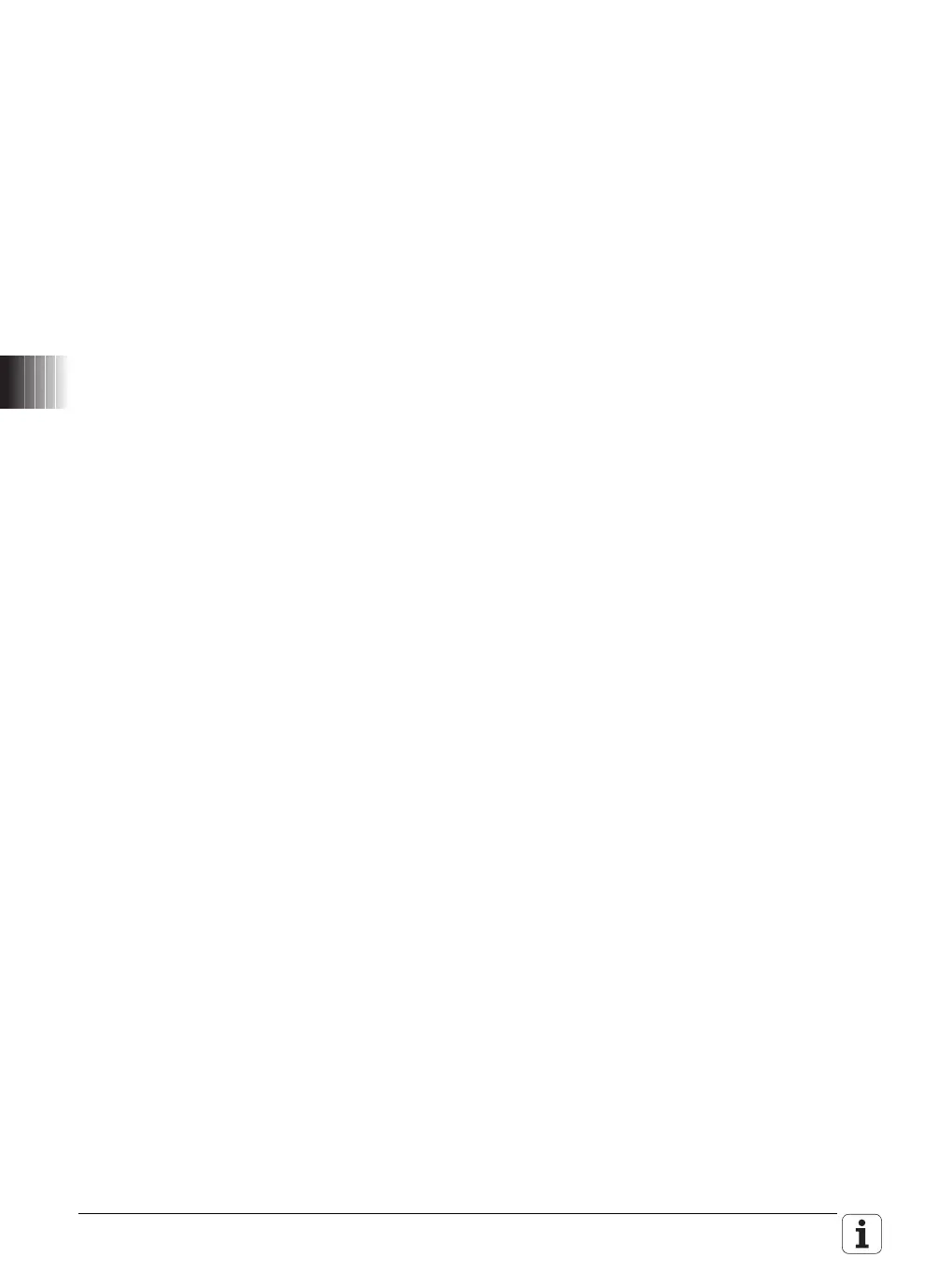858 HEIDENHAIN Technical Manual MANUALplus 620
Multifunction
filter
With the CC 61xx and CC 424, you can influence the manipulated variable of
the speed controller (= nominal current) and the position controller (= nominal
speed) by means of up to five freely definable filters per axis. These filters are
multifunctional filters, which means that the filter type of each individual filter
order can be selected as desired. They are also effective for the spindle(s).
Objective of the
filters
The first objective when adjusting a machine is the optimization of the control
loop in the current and speed controller. The increase of the P component of
the control loops in order to raise the dynamics of the machine is the main
aspect of this. If a control loop is at the oscillation limit, these oscillations can
be damped with filter functions, so that the P components can be increased
again.
The second objective when adjusting a machine is the optimization of the
position controller. Here it is attempted to increase the k
V
factor in the position
controller, in order to simultaneously increase the machine's performance (the
acceleration behavior, for example). The procedure is always to increase the
k
V
factor to the oscillation limit, damp these oscillations with the filters, and
then increase the k
V
factor again.
Types of filters Three different types of filters per axis are available for selection:
PT2 low-pass
•Use:
- Oscillations in the upper frequency range (typically: from 500 Hz)
- High-frequency noises on axes (such as during switch-on)
Band-rejection filter
•Use:
- Oscillations in the middle frequency range (typically: between 100 Hz
and 2.5 Hz)
• Typical settings:
- Damping from 6 dB to 9 dB
- Bandwidth: equal to the center frequency, constant from 500 Hz
• Disadvantage:
- These can strengthen oscillations in the lower frequency range
Phase increase
• Use:
- Oscillations in the lower to middle frequency range, which occur
because of an insufficient phase reserve
- Oscillations in the lower frequency range, for which band rejection
would excessively decrease the amplitude
• Typical settings:
- Phase from 20° to 80°
- Center frequency: Frequencies from 3 Hz to 400 Hz
- Bandwidth: Equal to the center frequency (oscillation frequency)
• Disadvantage:
- The control-loop gain above the center frequency is increased. The
increased use of band-rejection filters can become necessary, or the
P component might need to be reduced.
• Note: After the settings have been made, the stability of the control
loop must be checked again (P and I component)

